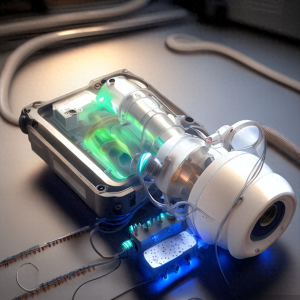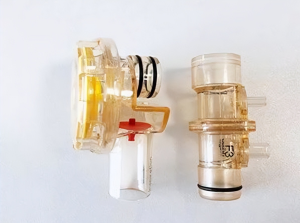In the field of modern clinical medicine, ventilators are undoubtedly crucial medical devices. They act as loyal guardians, always ready to provide respiratory support to patients.
As an effective means of artificial ventilation, ventilators play a vital role in preventing and treating respiratory failure, reducing complications, and prolonging patients' lives. However, the flow sensors in ventilators, serving as precious gems, are highly sensitive electronic components that require meticulous care.
Negligence in routine maintenance and disinfection can lead to sensor damage and even cross-contamination, posing risks to patients relying on ventilators for safe breathing support.

Therefore, it is essential to cherish and care for the flow sensors in ventilators. Regular cleaning and disinfection of the sensors should be performed to maintain cleanliness and hygiene. Additionally, periodic sensitivity checks are necessary to ensure accurate monitoring of patients' respiratory conditions.
For disinfection, appropriate disinfectants and proper methods should be employed. For example, the sensor surface can be gently wiped with 75% medical alcohol, or high-pressure steam sterilization can be applied. Care should be taken to prevent disinfectants from entering the internal components of the sensor to avoid damage.
Since the 1990s, flow sensors have played an indispensable role in ventilators, witnessing the rapid development of ventilation technology. Today, flow sensors have become standard components in mid-to-high-end ventilators. With their keen sensing ability, they convert inhaled and exhaled gas flow into electrical signals, providing accurate data to the signal processing circuit for real-time monitoring and display of tidal volume, minute ventilation, and flow rate.
In the field of clinical medicine, flow sensors are primarily used to capture and interpret human biological signals, providing healthcare professionals with intuitive and accurate patient information. In ventilators, as a core component, flow sensors enable real-time monitoring of patients' respiratory conditions, providing precise respiratory data to assist doctors in formulating more accurate treatment plans. Their presence allows healthcare professionals to conveniently assess patients' breathing status for timely and effective interventions.
Special components of ventilators, including expiratory valves and flow sensors at the expiratory end, require attention during disinfection using equipment such as the Anesthesia Breathing Circuit Disinfection Machine. Due to the sensor's delicate nature, it is advisable to remove the sensor to avoid unnecessary damage.

Disinfection methods may include:
Bacterial filters: It is preferable to use bacterial filters during sensor installation to ensure accurate detection and prolong the lifespan of the sensor. However, prolonged use of bacterial filters can increase expiratory resistance, necessitating regular replacement.
Alcohol disinfection: After use, it is important not to immediately immerse the sensor in alcohol for disinfection. It should be allowed to cool naturally for at least 30 minutes. This is because the high-temperature hot wire (up to 400°C) will burn if exposed to alcohol. During cleaning and disinfection, gentle immersion is recommended, avoiding vigorous shaking in liquid to prevent wire breakage. When the sensor needs to be soaked in 70% alcohol, it should be immersed for one hour and then air-dried naturally, without using cotton swabs for wiping.
In summary, for flow sensors, it is crucial to adapt to various disinfection methods, consider the cost-effectiveness during usage, and maximize their lifespan. Healthcare facilities must carefully consider these important factors when selecting ventilators.
For clinical practitioners and biomedical engineers, having knowledge of routine maintenance and care for flow sensors in ventilators is highly beneficial for their usage, troubleshooting, cleaning, and disinfection. It acts as a versatile key that unlocks the domains of ventilator use, maintenance, troubleshooting, and cleanliness. This knowledge not only enhances their ability to use and maintain ventilators but also serves as a valuable aid in troubleshooting when needed.
High-frequency keywords: ventilators, flow sensors, maintenance, disinfection, cross-contamination, cleanliness, hygiene, bacterial filters, alcohol disinfection, healthcare professionals, real-time monitoring, treatment plans, biomedical engineers.